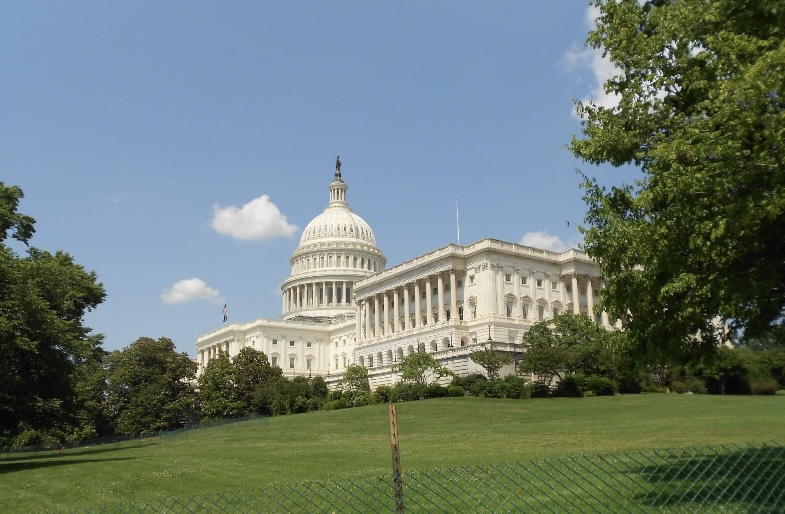President Donald J. Trump has now implemented a tariff on imported goods as a way to try to earn back what America has financially lost by paying improper tariffs from other countries.
President Trump has proposed the implementation of new tariffs on imported goods as a part of his economic strategy. Tariffs are defined as taxes placed upon imported products. They have been a key aspect of Trump’s trade policies in the past, particularly during his first term. He imposed tariffs on goods from China, the European Union, and other trading partners. His most recent tariff proposition was planned to reshape the US trade policy. It would increase duties on a wide range of imported goods. This created the goal of boosting domestic manufacturing producing American jobs and reducing reliance on foreign economies.
This article will examine Trump’s tariff plan called “Make America Wealthy Again”, the potential benefits and drawbacks, and how it could impact industries, consumers, and global trade relations.
Trump has suggested imposing a universal tariff of 10% on all imports. This would add to targeted tariffs on 50 countries, such as China. However, on April 10, Trump increased China’s tariffs to over 145% on many goods. He also instituted “reciprocal tariffs” where he explained, “They charge us, we charge them. How can anybody be upset?”
This marks a significant shift in trade policy. The main goals of this tariff plan include: encouraging domestic production, reducing the trade deficit, punishing countries for unfair trade practices, and raising revenue for the US government. Rogers, a U.S. economic follower, believes that, “The way our president is going about it is very uncommon but most likely, a full-proof plan to get the U.S. economy back on track.”
President Donald J. Trump has implemented significant tariffs on imports from key trading partners including Canada, Mexico, and China. These measures have led to a series of retaliatory actions and have raised concerns about potential future economic impacts.
Mexico and Canada: On February 1, 2025, President Trump signed executive orders imposing a 25% tariff on all imported goods from Canada and Mexico. A lower tariff rate of 10% has been applied specifically to Canadian energy imports. These imports include electricity, natural gas, and oil. This is done to “minimize any disruptive effects” on the United States energy sector. In retaliation, both nations announced plans to implement retaliatory tariffs on United States goods. Canada, for example, posed a 25% tariff on $155 billion worth of US goods into phases.
China: The administration originally imposed a 10% tariff on all imports from China, aiming to address concerns over trade and balances and alleged unfair trade practices. In retaliation, China has adopted calculated measures including imposing a 10% to 15% tariff on $21 billion worth of U.S. goods in two phases as well. Forbes Magazine reports that as of April 10, “a combined 145% tariff is now in place for many goods from China” after “China imposed 84% retaliatory tariffs on U.S. imports.”
Potential benefits of the tariff were (and co heavily debated such as job creation and economic growth. By making foreign products more expensive, United States consumers and businesses may turn to domestically made alternatives. This will boost American industries and create jobs in manufacturing, production, and distribution. This plan may also strengthen National Security. This is because reducing the need for foreign goods, particularly from competitors like China, may help the United States stay less vulnerable to supply chain disruptions. Lastly, placing tariffs on imports is crucial in protecting key industries within the United States. Sectors such as steel, automotive, and technology could benefit from reduced foreign competition. This would help stabilize domestic industries that have suffered from outsourcing. Stepien, a worker of an automotive center says, “These changes need to happen to aid America’s economic comeback.”
Although there are many expected benefits, there may also be many drawbacks. One of which includes higher prices for consumers. Tariffs on imports would likely lead to increased prices for goods such as electronics, clothing, and household items. This in turn, may place a financial burden on American families and businesses. Over time, the tariffs will either adjust or lower. However, for the time being many imported everyday items may have a raised price. Another concern will be the impact on United States agricultural farmers. In previous tariff battles, countries such as China retaliated by targeting the United States’s agricultural exports affecting farmers who rely on global markets to support their families as well.
Donald J. Trump’s proposed tariffs on imports represent a significant shift in the United States trade policy. With potential benefits for domestic industries but also serious economic risks. While tariffs will be effective in protecting specific sectors and collecting revenue, they also come with the speculation of higher consumer prices, further trade retaliation, and supply chain disruptions.









